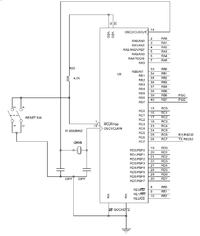electronics_guy
Member level 2
I have some doubt about PIC microcontroller. I want to know, is it possible to group the channels of ADC module in PIC micro controller, I mean, there are a total of 8 channels in ADC module, so can I group them, say 5 in one group to perform ADC and 3 in other group to perform some Sample and Hold circuit.... Is it possible to do it?
Thanks in advance.....
Thanks in advance.....
